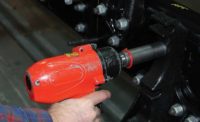Although preventive health management in businesses is an ideal tool for driving down high healthcare costs, many companies have so far neglected this important area. Businesses are being slow to recognize that preventive activities can actually pay dividends within a short timeframe. Both small businesses and big multinationals often lack the essential know-how for putting preventive health management into action - and that includes ergonomics in the workplace.
Musculoskeletal Disorders - Common Complaints
Pain is a common and disabling condition in the US workforce. Most of the pain-related lost productive time occurs while employees are at work and is in the form of reduced performance. In order to save money and boost productivity, companies should do everything they can to help their employees stay healthy.
Musculoskeletal Disorders (MSD) are among the most common work-related injuries. According to the US Bureau of Labor Statistics, MSD incidence rate in 2012 was 37.8 per 10,000 full-time workers (FTW); the average case entailed 12 days away from work. Sprains and strains accounted for about 43% of the cases. The most common event associated with the injury at work is overexertion related to lifting, pushing, pulling, holding, carrying, or throwing. This data reinforces the need for workplace accommodations that address the ergonomic causes of musculoskeletal disorders.
Ergonomic Work Benches
In looking after the well-being of employees, work bench components need to be designed to fit with easily-adjustable features wherever possible. After a brief training, including how to adjust chairs, employees can make all the necessary adjustments independently so they may work in their best posture and, more importantly, modify that posture at any time.
When it comes to handling materials at a work bench, the ideal place to position components is in a zone reachable by each arm (seen as the orange zone in the figure to the right). Operators can reach articles in this zone without having to turn their bodies. This high-degree of flexibility keeps reaching distances to a minimum and reduces the musculoskeletal strain on the employees while increasing productivity.
Items used less frequently can be located in the extended zone (seen as the light blue section in the figure above), which also stretches away from the bench. This zone can incorporate mobile picking trolleys, which – if they are height adjustable - can enable operators to alternate between sitting and standing.
Demands of Lean Production
Many companies have employees moving between different work benches or alternating between different processes at one bench. These companies are typically faced with a long setup time and alternating personalized configurations.
Modular work bench systems have thus been developed to meet three key goals: keeping setup times as short as possible; ensuring reaching distances and reaction times stay short, even after a work bench has been changed; and delivering safe working practices.
By using an entirely compatible, modular building kit system, companies can make all sorts of modifications, adjustments, extensions and improvements quickly, easily, and in harmony with the lean philosophy, thereby saving costs and relieving the strain on their workforce.
Using Ergonomic Knowledge
Taking an active interest in supporting the health and well-being of the work-force boosts job satisfaction and motivation – and ultimately leads to lower error rates and an increase in productivity.
A company that demands the ultimate in quality standards for its products cannot avoid meeting the same high standards in production as well. The findings of scientific studies and research are constantly being fed into the development of work bench systems, as is constructive feedback from users: so why not make the most of this know-how?
item America
12105 Insurance Way
Hagerstown, MD 21740
Phone: 301.665.9772
Fax: 301.665.9775





